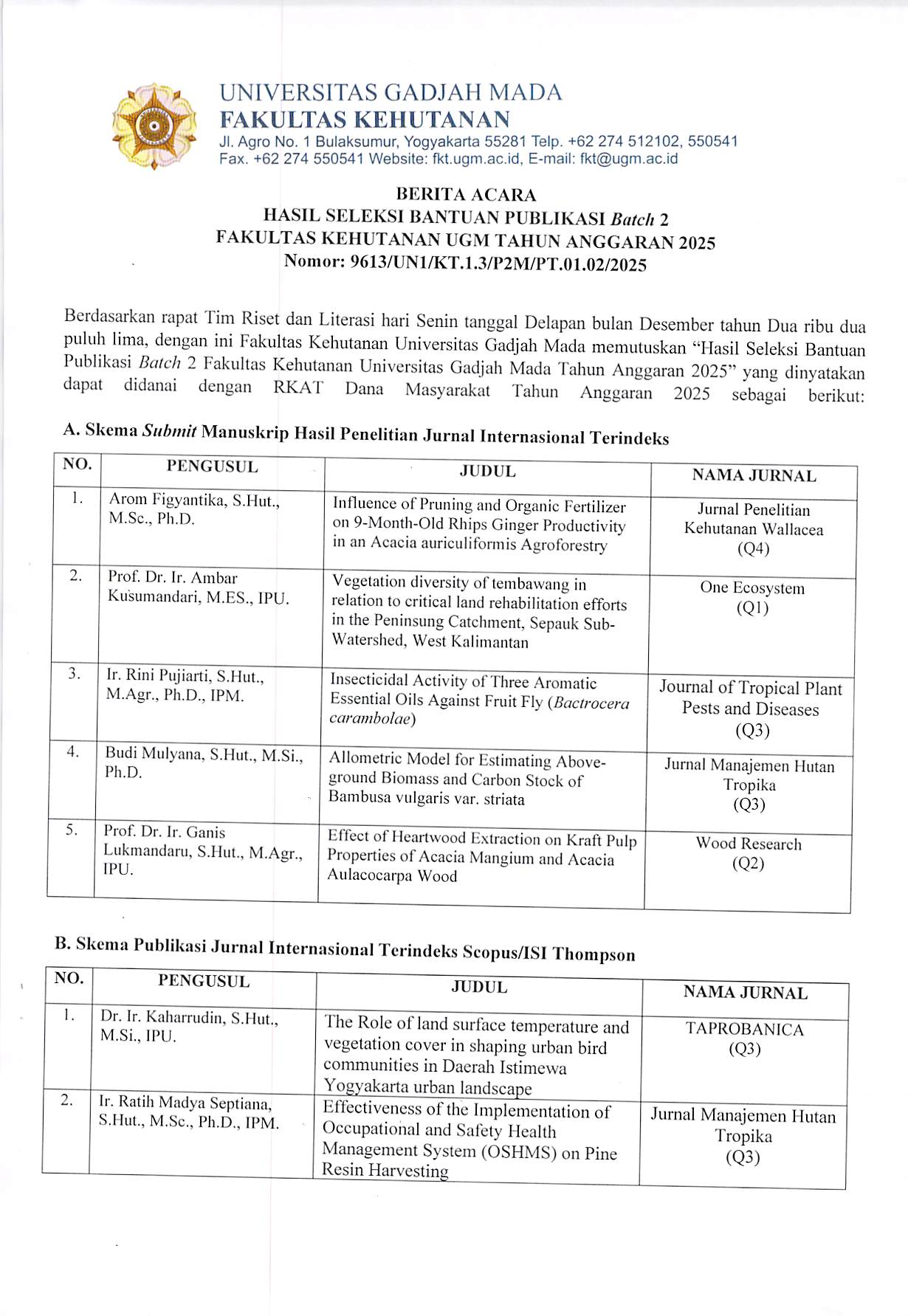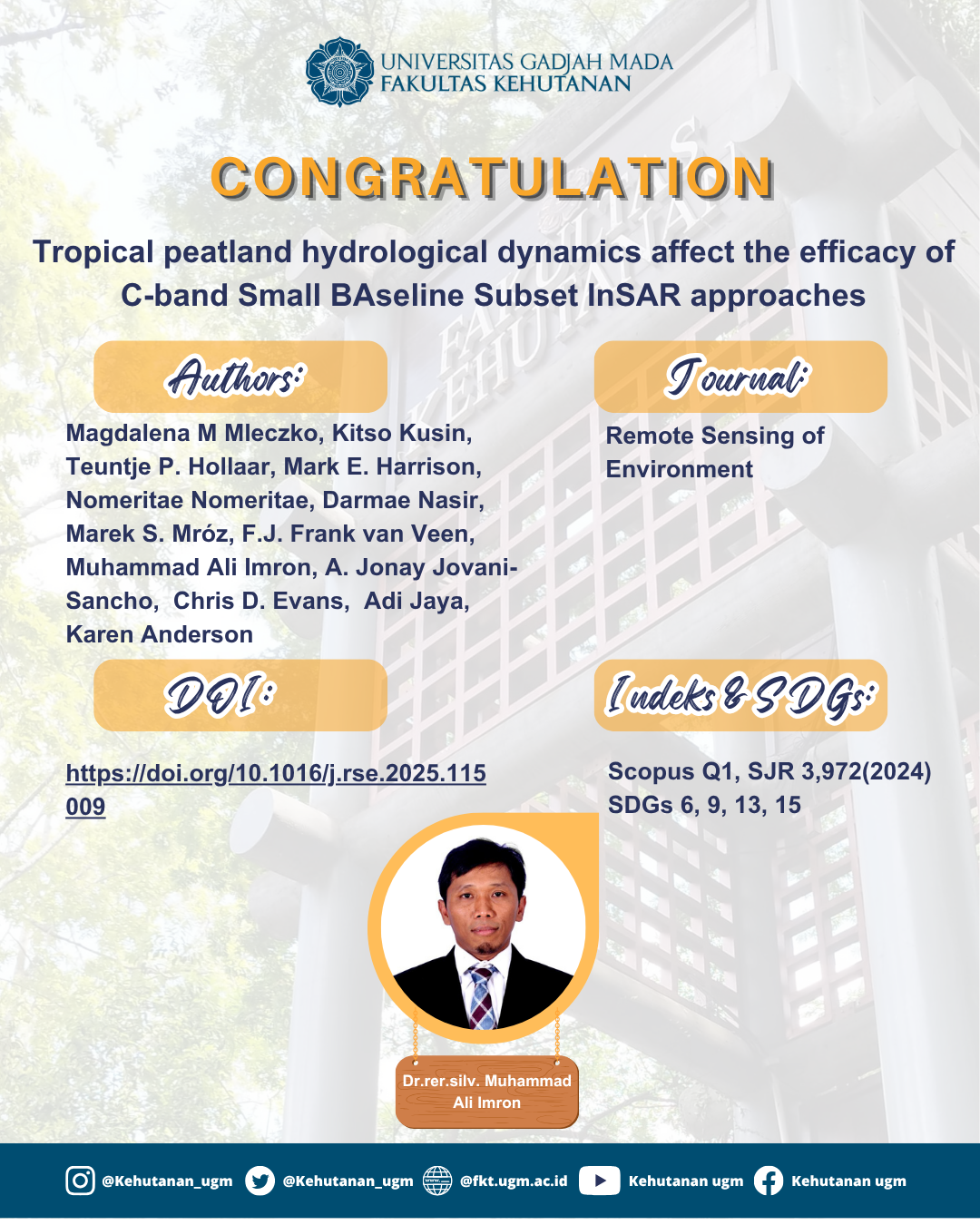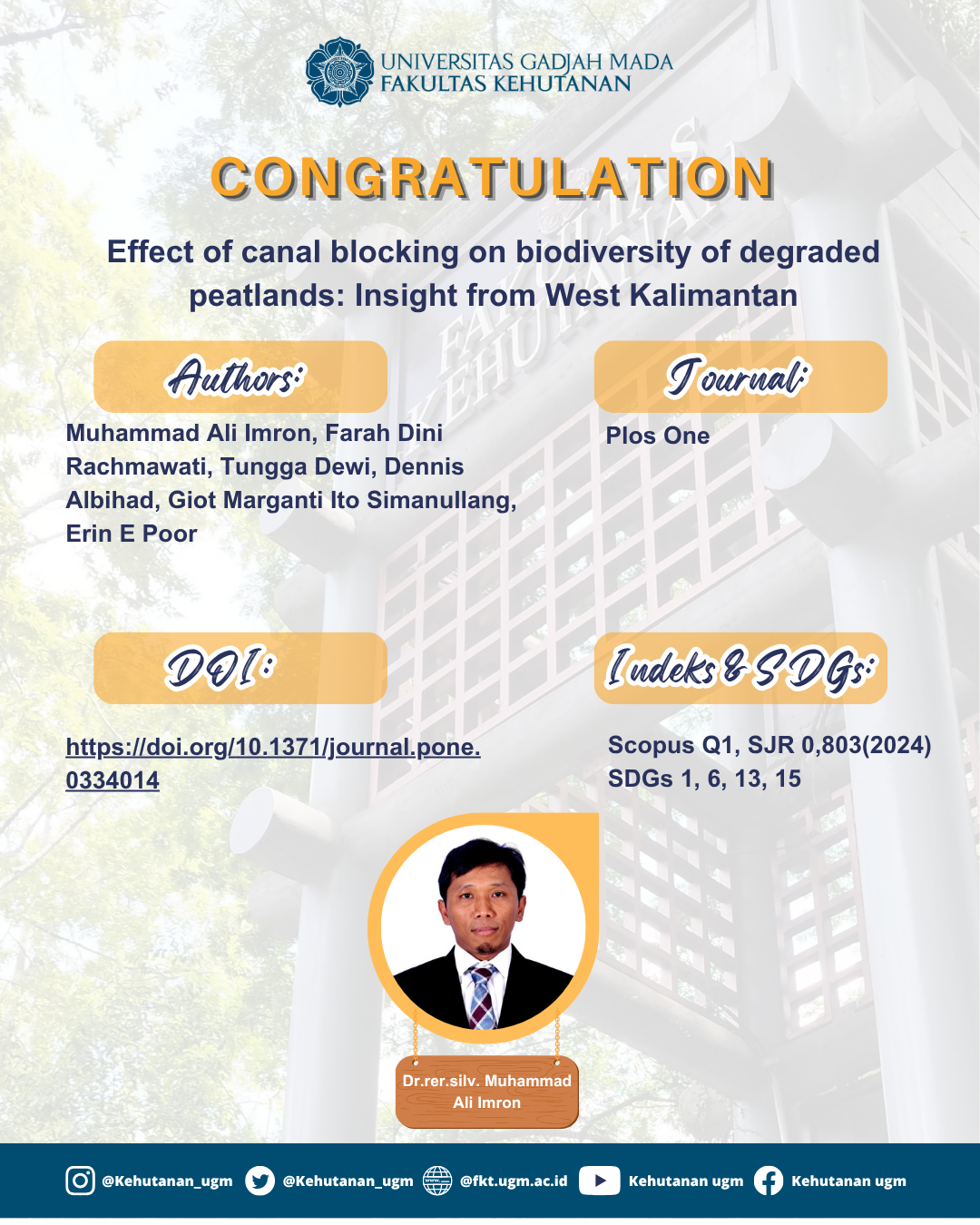
Pengumuman lengkap bisa didownload dibawah ini:
Pengumuman Hasil Seleksi
Pengumuan Penelitian dan Literasi Wednesday, 10 December 2025

Pengumuman lengkap bisa didownload dibawah ini:
Pengumuman Hasil Seleksi
berita penelitian dan publikasi Friday, 7 November 2025

Abstract
Tropical peatlands storing ∼18–25 % of global peat volume contribute significantly to the global carbon cycle. To balance preservation and protection of tropical peatlands requires assessment of their ecohydrological conditions and continuous monitoring through seasons. This is challenging to achieve using in situ sampling, but there is a great promise to use C-band Sentinel-1 data for this due to its weather-independence, and particularly its increased read more
berita penelitian dan publikasi Friday, 31 October 2025

Abstract
Large-scale disturbance in peatland areas causes many wildlife species to suffer due to limited resources or habitat loss. Following the high attention to peatlands, some restoration efforts, such as canal blocking, have been undertaken to restore the hydrological condition of peatlands. Nonetheless, our understanding of peatland biodiversity post-canal blocking is still limited. Thus, we conducted a study in West Kalimantan to assess wildlife diversity in read more
berita penelitian dan publikasi Wednesday, 22 October 2025

Abstract
The performance of wood binders in particleboard is diminished by both expiration and improper storage. Those effects on citric acid powder, which is one of potential natural adhesives of particleboard for the future, is still unknown. This research investigated the effect of duration length of citric acid past the expiration and its storage conditions on the properties of Salacca frond particleboard. The effect of its binder content and pressing temperature read more
Pengumuan Penelitian dan Literasi Tuesday, 21 October 2025

Surat resmi dapat didownload dibawah ini:
Surat Resmi
Poster Pengabdian kepada Masyarakat Thursday, 16 October 2025
Kegiatan Pengabdian kepada Masyarakat Tematik Khusus Departemen Silvikultur Fakultas Kehutanan UGM tahun 2025

Video Pengabdian Thursday, 16 October 2025
Pengabdian kepada Masyarakat Tematik Khusus Departemen Silvikultur, Fakultas Kehutanan UGM tahun 2025
Video Pengabdian Thursday, 16 October 2025
Pengabdian kepada Masyarakat Tematik Khusus Departemen Manajemen Hutan, Fakultas Kehutanan UGM tahun 2025
Video Pengabdian Thursday, 16 October 2025
Pengabdian keapda Masyarakat Tematik Khusus Departemen Konservasi Sumber Daya Hutan, Fakultas Kehutanan UGM tahun 2025
Video Pengabdian Thursday, 16 October 2025
Pengabdian Kepada Masyarakat Tematik Khusus Departemen Teknologi Hasil Hutan, Fakultas Kehutanan UGM tahun 2025